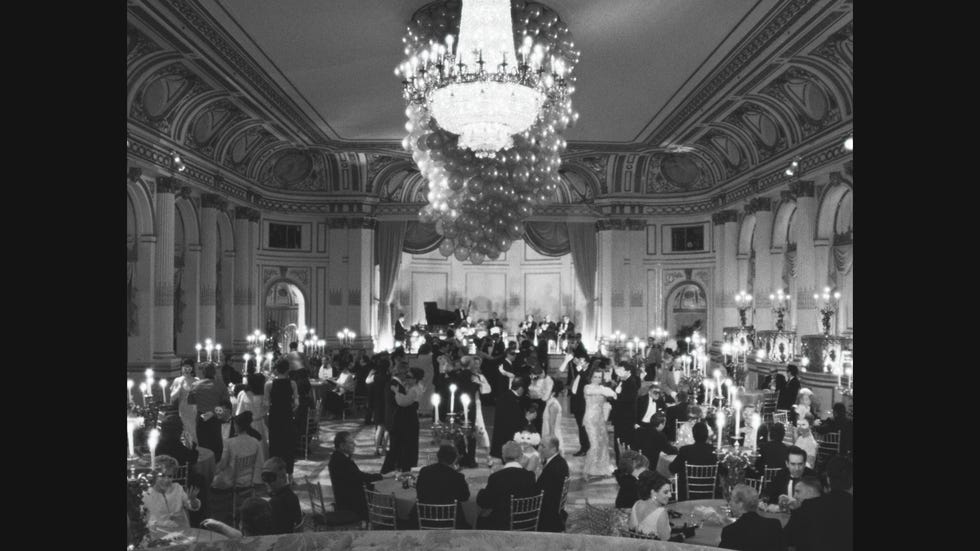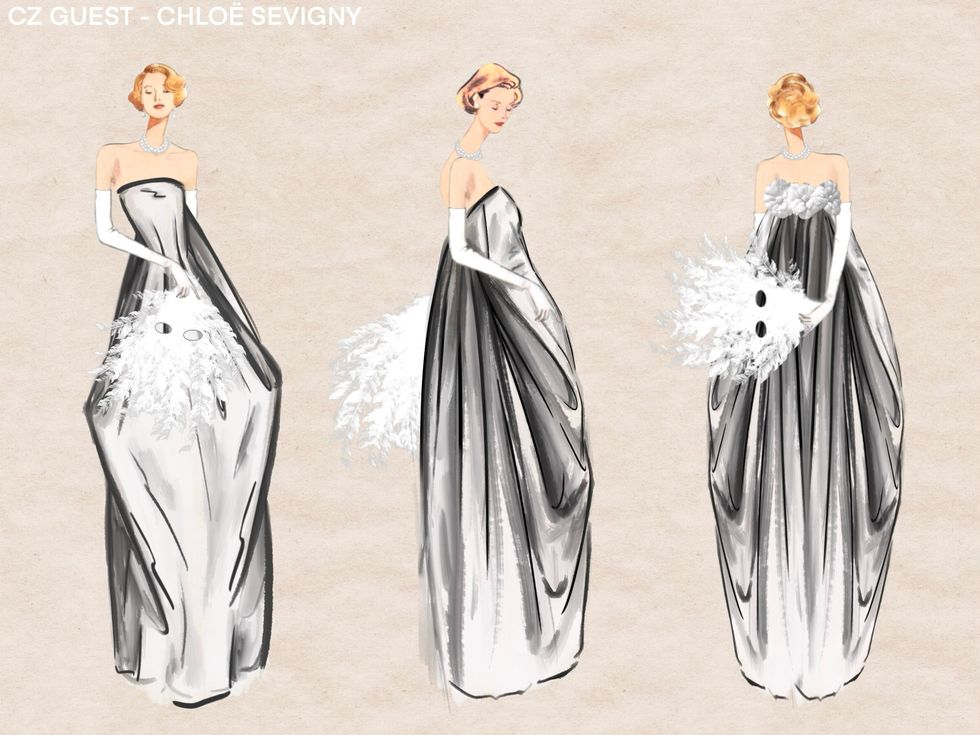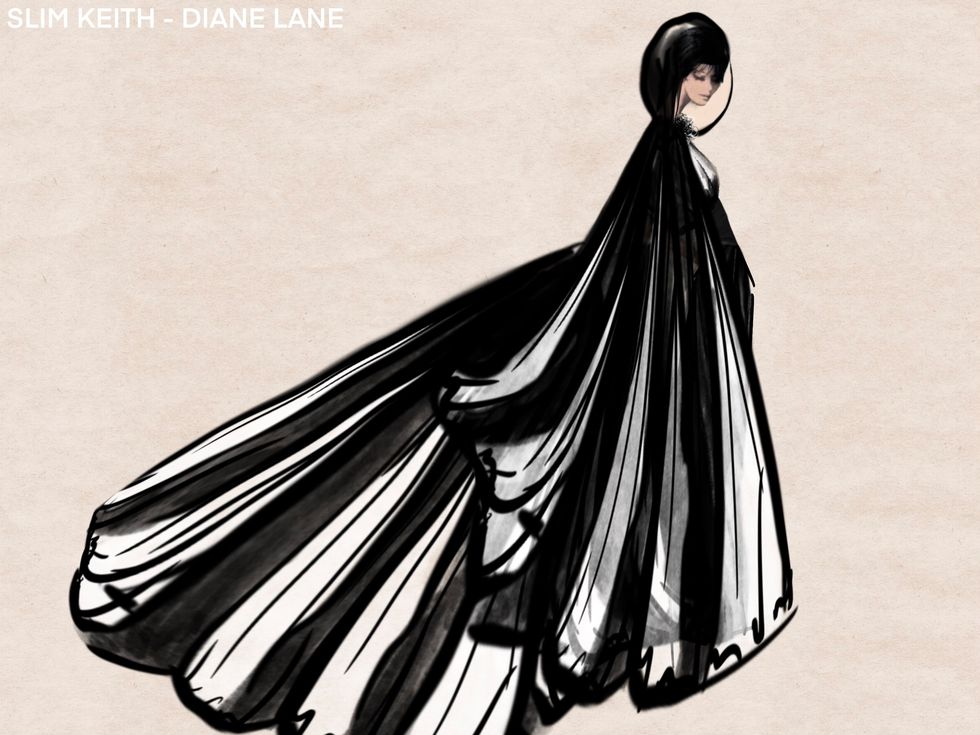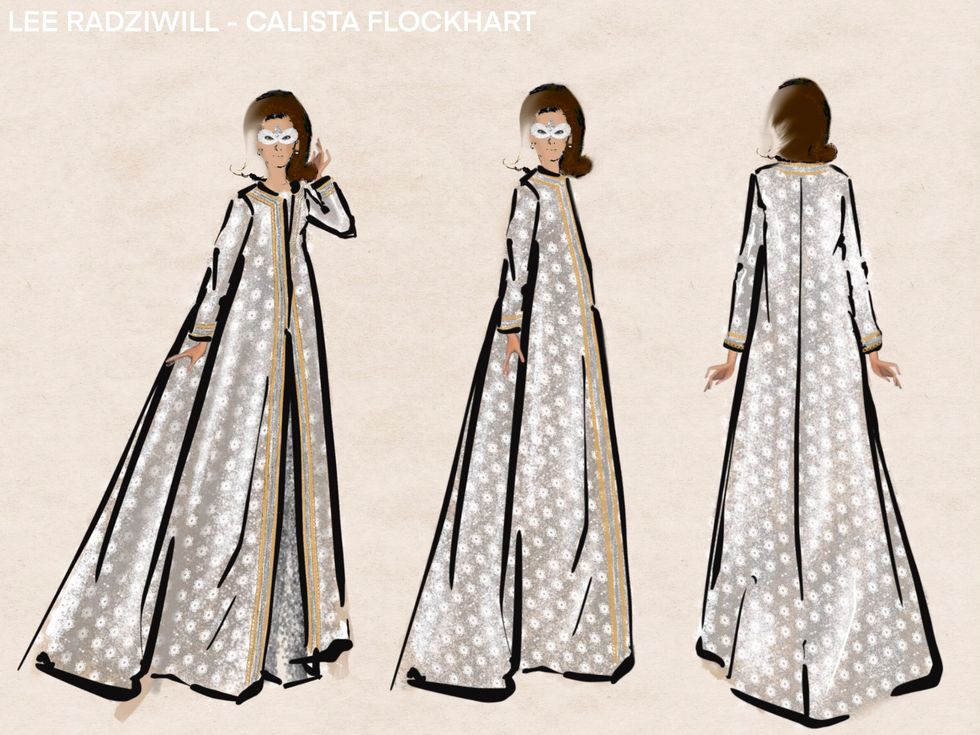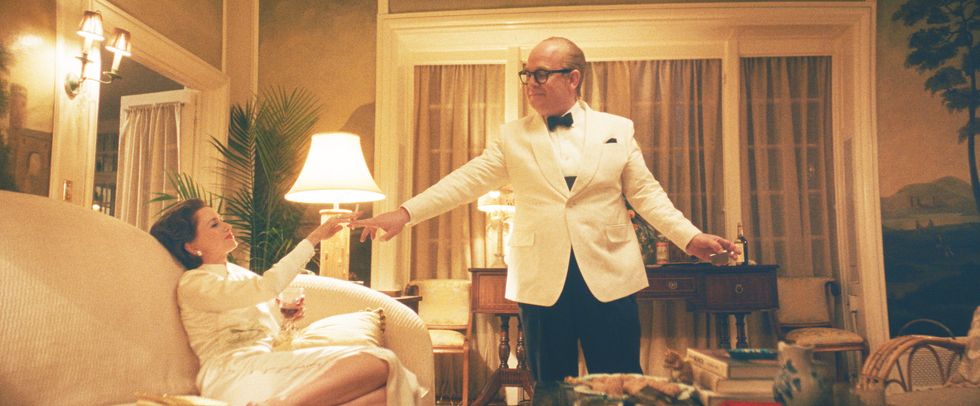Feud Dressing Glides Into the Picture
Style Points is a weekly column about how fashion intersects with the wider world.
Of all the fashion archetypes to come revving back, the society swan was perhaps the least expected. Mile-high Kenneth updos and double strands of pearls may be relegated to the distant past, but only a few episodes into the FX series Feud: Capote Vs. The Swans, the looks of the novelist’s smart set, as incarnated by an all-star cast that includes Naomi Watts and Chloë Sevigny, are all over my timeline.
Tonight’s episode was set at the social apex of that epoch: the Black and White Ball Capote held in at the Plaza Hotel in 1966. And who better to bring back the fashion of that bygone gala than Zac Posen? “It’s definitely in my vernacular,” the designer tells me of the era. While Posen was having dinner with his friend Gus Van Sant, who directed the majority of the series, the auteur mentioned that he was working on a project about Capote and his swans. “I was like, ‘Well, Gus, if you’re going to make some gowns, let’s make sure that the Charles James gowns are done right.’ And then a few days later, he’s like, ‘Actually, it’s Answered Prayers [Editor’s Note: an unfinished novel by Capote], and it’s a later period of time.’” Soon enough, Posen had secured the job of outfitting the swans for the event. (The costume designer for the overall series is Lou Eyrich.)
He went into what he calls “this crazy web of research,” he tells me. “You know when you see people mapping out a murder mystery, where it’s like a spiderweb?” He dug into everything from Ron Galella’s photographs of social fixtures to illustrations by Paul Block and Joe Eula and Cecil Beaton’s writings. (In his apartment, Posen is sitting in front of wall-to-wall shelves of books, and our conversation is punctuated with cries of “hold on, I’m going to go to my library.”)
It helped that, as Posen says, the party was “the most documented social event of its time. Truman curated his list with Old World society, New World media, celebrities, and subcultures that he thought were interesting. And that had really never been done in New York.” One source even gave Posen VHS recordings of CBS’ live broadcast from the entrance to the ball, a true marker of its mainstream importance.
“They all wanted to outdo each other,” he says of the boldfaced, elaborately masked names who attended. “It was playful.” To bring this fashion-as-competition element to life, Posen created boards for each character based on all his research, but he still had to use his imagination. For example, in the case of Slim Keith, played by Diane Lane, Posen was unable to find any extant images of her at the event. (“Certain people did not get photographed,” he explains. “There was an option for them to go through a side entrance to not get photographed, because it was maybe considered tacky.”)
Next, he says, “I went on a crazy swatching spree, where I started collecting materials and textures, because this all had to be made in four and a half weeks. I went to the last remaining silk flower place in New York, trying to find the dead stock of molds that were made at that time period,” He constructed pieces on mannequins sculpted to resemble each actress’ body, “building each character as if they were evil aquatic birds.” (It helped that he knows, and has dressed, several of the actresses in the cast.)
When show creator Ryan Murphy visited Posen’s father’s painting studio in New York City’s SoHo neighborhood, where he was building the dresses, he said, “This is amazing, I love it. But I didn’t hire you to recreate history.” Which was exciting for Posen to hear, because it gave him even more creative license. “This is the first time in my career I think I’ve ever heard ‘more,’” jokes Posen. “It was an Oliver moment.”
Feeling free to heighten and embellish led him down interesting creative paths. For Sevigny, as C. Z. Guest, he created a gown with 3-D flowers that resembled equestrian prizes. “For C. Z., as an equestrian, as a classicist, that was my homage and kind of a glass of milk to Mainbocher,” he says, referencing the couturier she often wore.
For Demi Moore’s scandal-plagued character Ann Woodward, who is a bit of an outsider to the scene, Posen asked himself, “What would make that feel vulnerable?” The result was “a psychedelic outfit with feathers, and crystals, and sparkle, because she was Miss Hollywood. It was a little bit of somebody who had been a star.” Moore “loved her headpiece, which was this crystal veil with these amazing Artemis plumages, because I wanted to show the fragility of somebody nervous. Truman, in the show, calls her a peafowl, not a swan, somebody who wants to be swanning, but is just not.”
Babe Paley, as played by Watts, “was a supermodel, in a way, of her time,” he says. “So I started looking at actual swan wings and their construction, and thought we could make this giant, revealing, very theatrical opera coat, something that had a life of its own and cocooned her. That way she could have a real unveiling, a Ryan Murphy fabulosity moment that we could bring to the silver screen, to your homes. This was really my chance to do it at the highest craft level and give my best Edith Head, Adrian, Irene, or even Bob Mackie moment. I looked at drawings of wings by Leonardo da Vinci, and we built this wing shape into the coat, while the interior was a riot of color.”
He calls Calista Flockhart’s look, for her role as Lee Radziwill, “the surprise star of the outfits. Sparkle and metallic always looks good on film. It was really a lesson for me in creating textures and dimensions that got layered on each other to create effect. And it has a gorgeous opera coat,” he says, noting that her costume is close to what Radziwill actually wore. And as Slim Keith, who was a famous pants aficionado, Lane wore a billowing coat with trousers. Posen decided, “She wouldn’t wear a mask, she’d just wear black glasses. She’s too cool for school as a character, as a style icon.”
What Posen deems “the real jewel of this moment and scene,” however, “is the apparition of Truman’s mom, played by Jessica Lange, who is a good friend and somebody I’ve dressed before. And what a dream to be able to theatrically costume Jessica Lange,” he says. “I’ve made her beautiful pieces before, to wear on the red carpet, but that’s very different from getting to do a surrealist ghost of a mother. Truman Capote’s mother was such a force in his life and had such history herself. And because it was an apparition, it was like, ‘What era is she?’ And I thought, ‘She’s the black swan.’ I wanted to combine every era, from the turn of the century up until the sixties.”
Seeing Lange arrive on the Plaza Hotel set and begin to rehearse her waltz, Posen says, “was like, I don’t know, Fellini meets Amadeus in Ryan Murphy world slash Zeffirelli. I was having a full moment walking her down the stairs.” As she rehearsed her waltz, Posen watched with his fiancé, ballet dancer Harrison Ball. “I introduced them, and she said, ‘When you’re watching my dance, if you have any notes, just tell Zac and he’ll pretend to fix my feathers.’”
The show feels simultaneously like a valentine to a lost time (the entrances, the long, bitchy lunches!) and an analogue to ours, which might explain why it’s resonating so strongly with viewers. “I think we’re living in a time like 1966,” Posen says. “The bubbling up of a deep unrest. And huge amounts of great wealth, different self-made dynasties. We’re seeing that again today.”
Posen, who was announced as The Gap’s new EVP and creative director a few weeks after our interview, has been busying himself creating one-of-a-kind pieces after shuttering his namesake brand in 2019). He designed costumes for the 2022 film The Outfit and has seen his work appear onscreen countless times. “I’m definitely interested in producing and directing as well in the future. And it was an incredible experience to feel really part of the production,” he says. “Ryan took me under his wing, and I was able to sit next to Gus and watch the takes. The AD turned out to be somebody I’d gone to high school with.” Posen sat there, taking it all in, “watching how movie magic happens. And my three-person team and I took every moment to make sure that our swans were as taken care of as the grand ladies they were portraying.”
Feud: Capote Vs. The Swans is now streaming via FX on Hulu.



